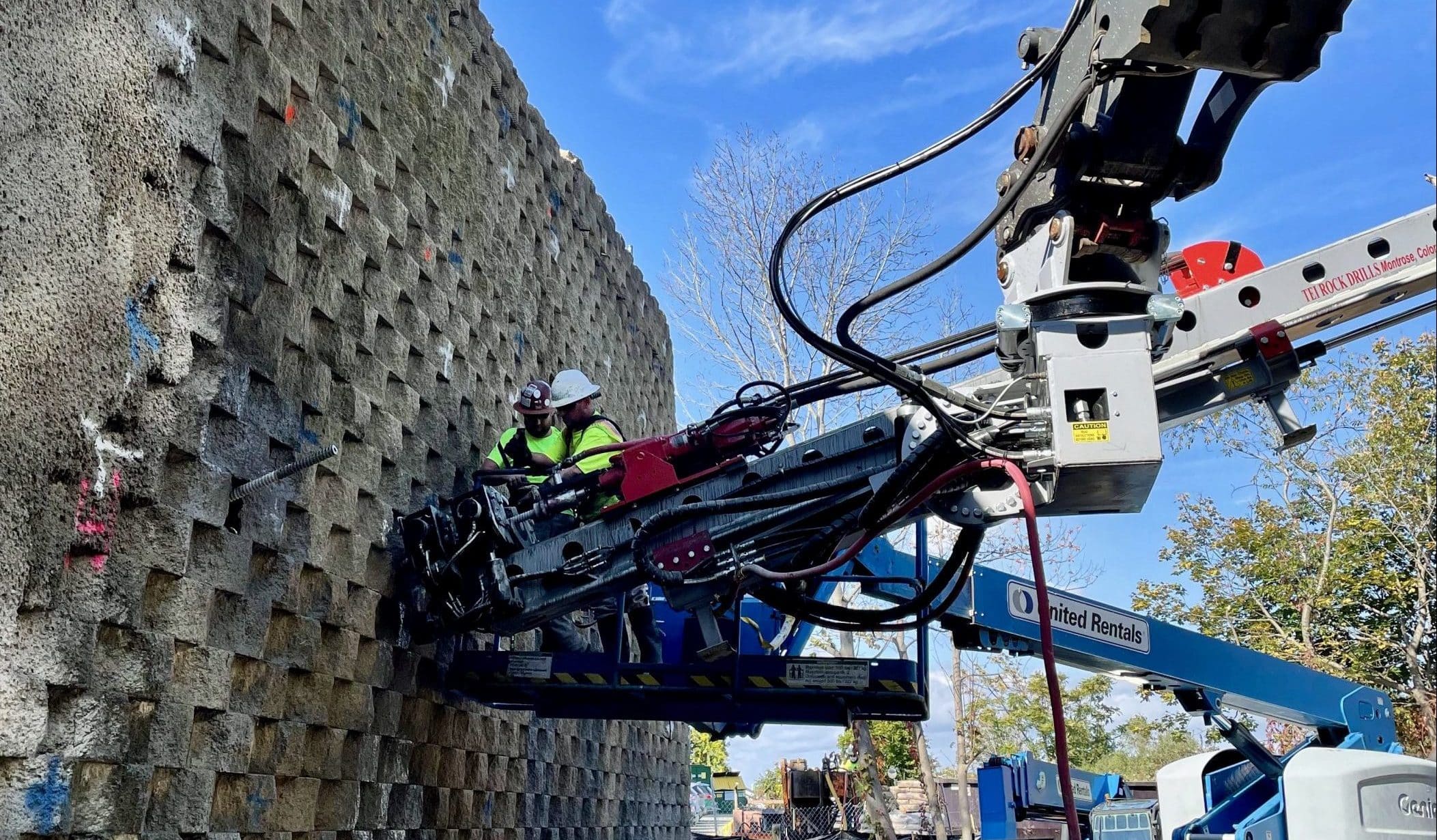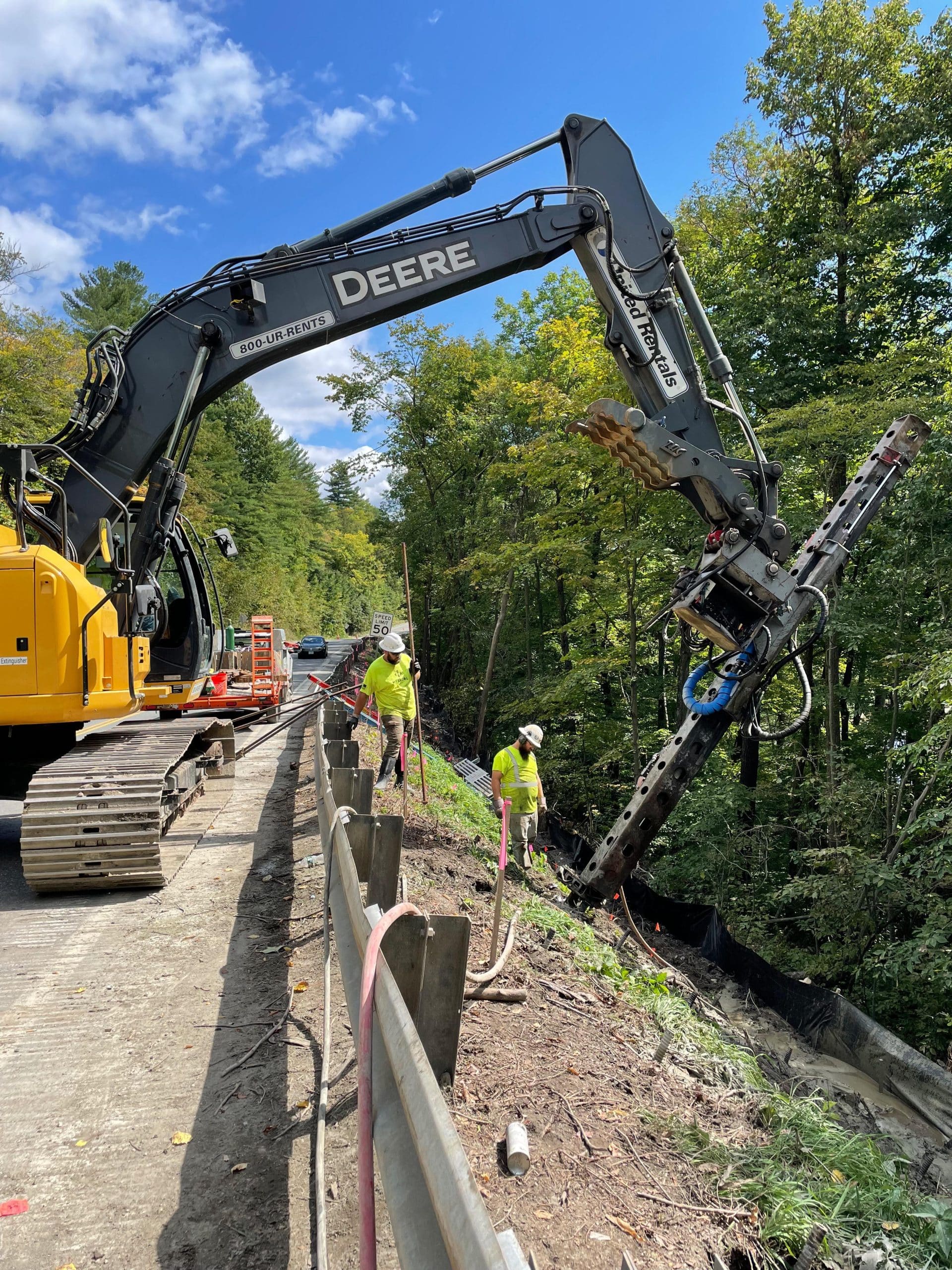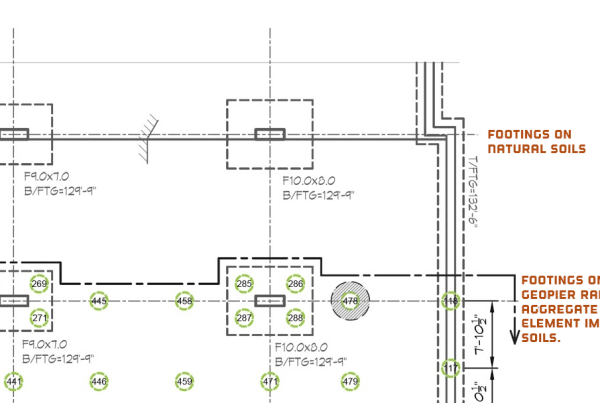Soil nailing is an engineered earth retention method that utilizes an array of grouted tensile elements (“soil nails”) and is typically combined with a well-drained wire mesh and shotcrete facing to create a stable reinforced soil mass. Each nail is installed by drilling a borehole into the soil, inserting a central steel bar, filling the hole with grout, and installing a steel bearing plate at the end of the bar. After the nails are constructed, the drainage panels and wire mesh-reinforced shotcrete facing are installed. This incremental process is repeated “top-down” until the final excavation depth is reached. In addition to providing temporary or permanent earth support, soil nailing is particularly suitable for limited access areas and/or irregularly-shaped excavations. Soil nailing can be used effectively to perform a number of functions, including:
- Excavation support
- Slope stabilization
- Repair of existing retaining walls
FEATURED PROJECTS
Retail Development – Site Retaining Wall Rehabilitation, Peabody, MA
This project involved repairing a substantial portion of an existing 25-foot-tall segmental block retaining wall. The blocks had reached the end of their service life and were deteriorating. The wall retained an active retail parking area above it, so the Owner required a permanent solution that would not interrupt day-to-day parking access. HELICAL worked directly for the Owner and designed/installed a network of soil nails (with permanent shotcrete facing) to stabilize the wall. A total of 106 soil nails were installed to stabilize approximately 3,000 SF of wall. The work was completed on schedule and did not interrupt use of the parking area above. Some additional project challenges included coordinating nail locations around existing utilities behind the wall and working through existing wetlands in front of the wall.
Vermont Department of Transportation – Slope Stabilization, Johnson, VT
The project consisted of drilling a soil nail array to stabilize an existing roadway embankment slope and help prevent a potential slope failure. The work included limited access at the top of the slope and directly adjacent to an active roadway. Because the embankment slope soil conditions were relatively soft and potentially unstable, we had to maintain our equipment at least 5 feet away from the top of the slope as not to impart an excessive surcharge load. A total of 437 soil nails were installed to stabilize approximately 9,000 SF of slope. After the soil nails were installed, a GeoBrugg© slope stabilization protective mesh was bolted to the nails to help enhance load distribution and provide surficial erosion control.




